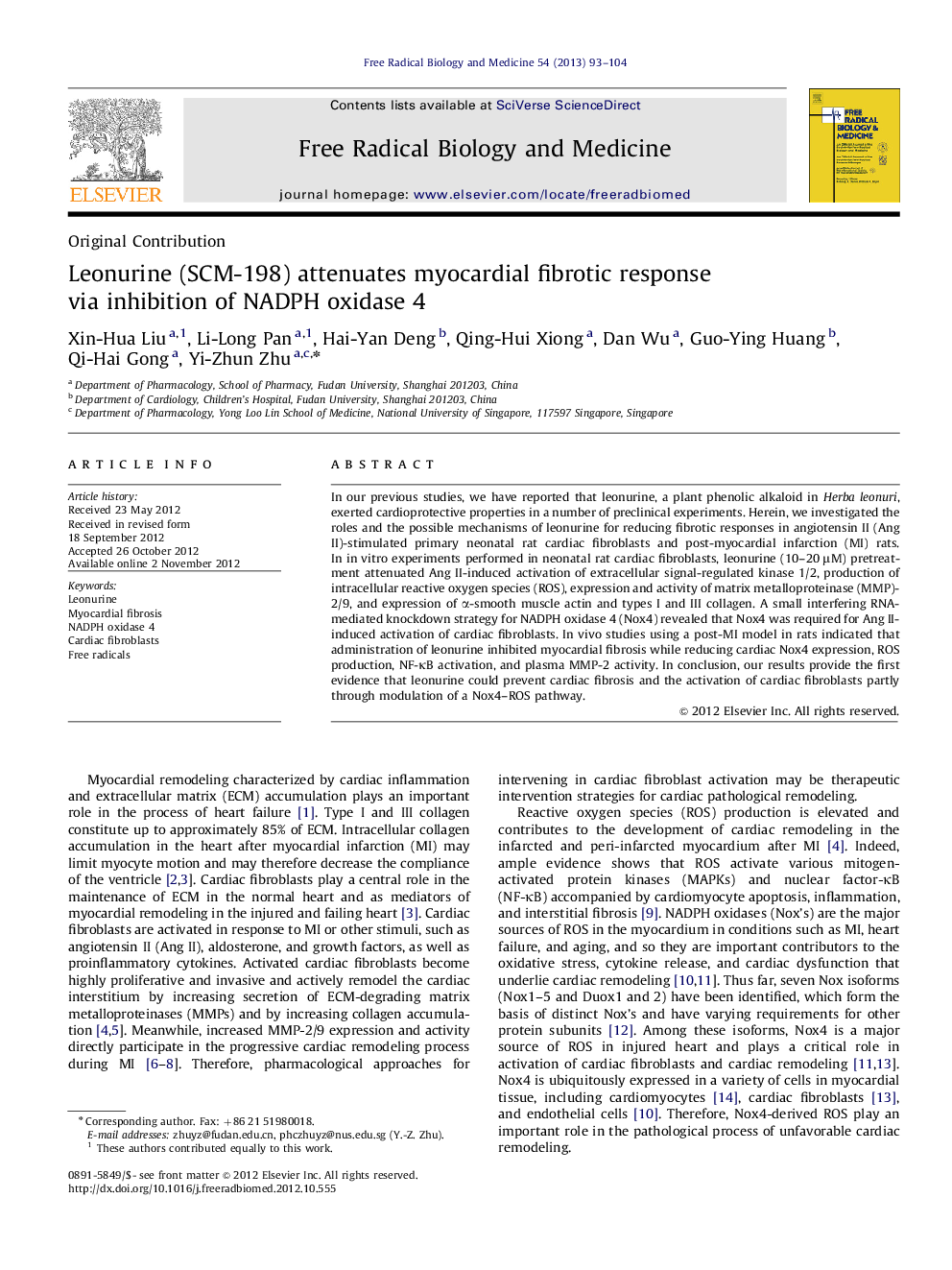| Article ID | Journal | Published Year | Pages | File Type |
|---|---|---|---|---|
| 1908701 | Free Radical Biology and Medicine | 2013 | 12 Pages |
In our previous studies, we have reported that leonurine, a plant phenolic alkaloid in Herba leonuri, exerted cardioprotective properties in a number of preclinical experiments. Herein, we investigated the roles and the possible mechanisms of leonurine for reducing fibrotic responses in angiotensin II (Ang II)-stimulated primary neonatal rat cardiac fibroblasts and post-myocardial infarction (MI) rats. In in vitro experiments performed in neonatal rat cardiac fibroblasts, leonurine (10–20 μM) pretreatment attenuated Ang II-induced activation of extracellular signal-regulated kinase 1/2, production of intracellular reactive oxygen species (ROS), expression and activity of matrix metalloproteinase (MMP)-2/9, and expression of α-smooth muscle actin and types I and III collagen. A small interfering RNA-mediated knockdown strategy for NADPH oxidase 4 (Nox4) revealed that Nox4 was required for Ang II-induced activation of cardiac fibroblasts. In vivo studies using a post-MI model in rats indicated that administration of leonurine inhibited myocardial fibrosis while reducing cardiac Nox4 expression, ROS production, NF-κB activation, and plasma MMP-2 activity. In conclusion, our results provide the first evidence that leonurine could prevent cardiac fibrosis and the activation of cardiac fibroblasts partly through modulation of a Nox4–ROS pathway.
Graphical AbstractFigure optionsDownload full-size imageDownload high-quality image (367 K)Download as PowerPoint slideHighlights► Leonurine inhibited Ang II-induced cardiac fibroblast activation. ► Nox4 siRNA abolished Ang II-induced fibrotic response, which was mimicked by leonurine. ► Inhibition of Nox4 expression by leonurine was involved in ERK signaling. ► Leonurine inhibited the Nox4–ROS system, accompanied by reduced myocardial fibrosis.
